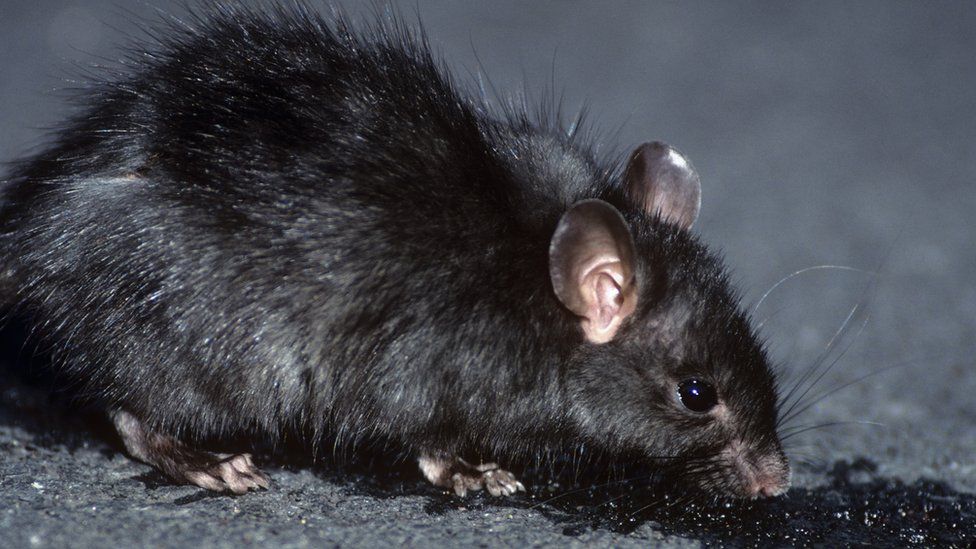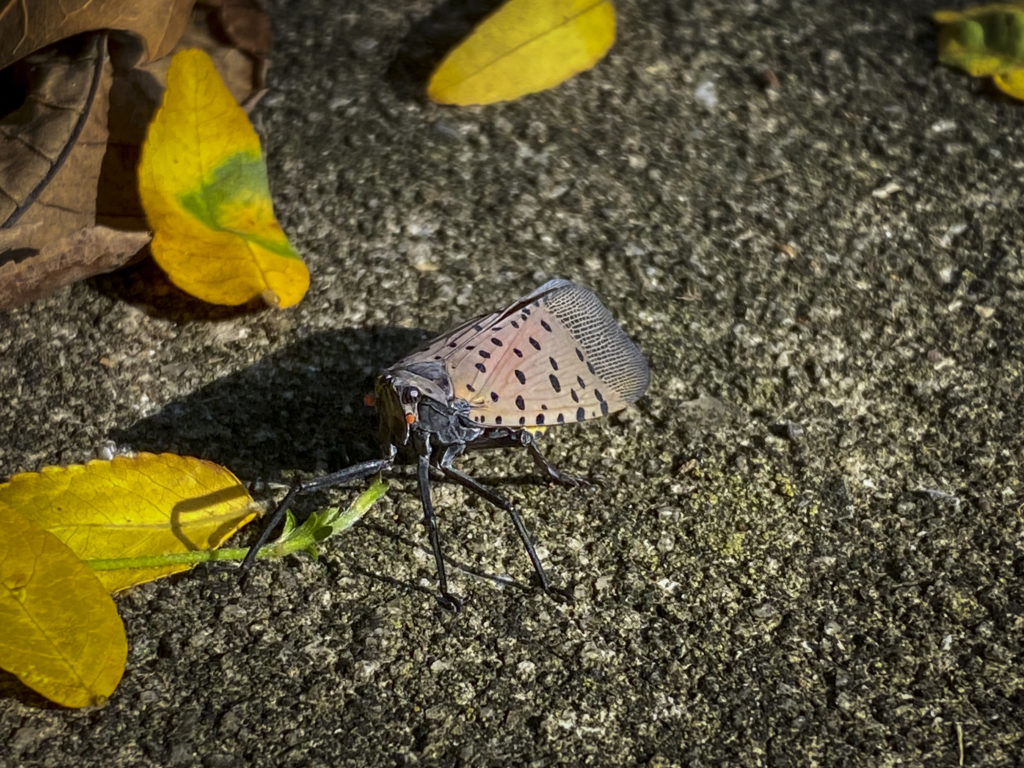
Carolyn Keller
Contributor
Carolyn Keller is a freelance writer, teacher and former journalist with a PhD in English from Binghamton University. She has traveled throughout Latin America, including extended stays in Mexico and Ecuador.
Learn more about Carolyn Keller
February 21, 2022
Invasive Species: The Art of Attention
Close your eyes and imagine an invasion. Simple, right? We see invasions on the news and in movies and video games all the time. We hear them too – the clatter of tanks, the drone of fighter jets, the rhythmic thudding of boots on the ground. We hear stories of combat, analysis of geopolitical impact. It’s dramatic, in your face, and the consequences can be seen immediately by the naked eye.
But what if the invasion didn’t look like that? What if it looks like the opalescent shimmer, half a world away, of slim mussel shells glinting under a Brazilian sun. Or it’s a pale flower, violet and translucent, with top petals like peacock feathers, floating in the freshwater Amazon basin. Or maybe, instead, it arrives in your backyard in Pennsylvania, announcing itself with a flutter of wings, broad and beige, red and polka-dotted? Maybe it takes the form of a moth hopping lightly onto your hand, a tick burrowing into your skin.
The second scenario is happening, and the common thread, for those that wish to tug at it, is human activity. Tug a little harder, and we arrive at economics and climate change. As with invasions, we tend to talk about climate change and its environmental impact in terms of the drama and worst case scenarios that accompany it: extreme weather, raging storms, carbon dioxide buildup or the cost to industry or global economies. The actions are bold and specific, and the images themselves are dramatic. Meanwhile, logging companies contribute to deforestation, and swaths of the Amazon rainforest, the globe’s supposed lungs, are set on fire in order to convert for agricultural purposes. Maybe this happens by accident, as is sometimes claimed, but often it’s very much on purpose, propelled by competition for resources in a global economy.
But what are the smaller impacts of this activity? When you see images of the Amazon on fire on CNN, perhaps you think “oh how terrible, but how could that possibly affect me?”
You may know some answers to this already – you’re already here, reading this blog, after all, which suggests an interest in environmental sustainability. Likely you’re the type of reader who accepts climate change as fact – as well you should. And the size of the impact is hard to deny: larger human movements – logging, for example, controlled fires in the name of deforestation – are easy to track in terms of destruction. You may already know how these actions in the name of commerce are gutting old forest and pushing indigenous communities out of their homes and ways of life.
These invasions are also real, and they’re happening right now – they’re just happening quietly, below the radar of the public imagination.
But these large-scale impacts also result in smaller shifts in native ecosystems that can have an equally devastating effect across the globe, not only on the above indigenous communities, but also local municipalities, like yours, and on the flora and fauna of the biodiverse region itself. These invasions are also real, and they’re happening right now – they’re just happening quietly, below the radar of the public imagination.
How? Let’s take a closer look at the ways in which the migration of small invasive species directly impacts far-flung regions of the world, from the Amazon to your own backyard, often through human carelessness or their simple, inadvertent lack of attention. Most of the damage caused by invasive species is connected to the ways in which they expand to fill the space they’re given – and then they take some more. Rather like colonizers – or loggers, if you will – invasive species arrive almost haphazardly, then sink roots into their new territory – sometimes literally, sometimes metaphorically, but always with stealth and tenacity – and overrun or eviscerate what was once there. International commerce and globalization, coupled with a willful or accidental overlooking of the local, is what gets us here.
Invasive Species in the Amazon

Let’s look at logging in the Amazon. If human intervention as aggressive as logging destroys a habitat, local species are often killed, or else they flee because they no longer know how to survive, or their ability to survive has been destroyed along with their natural habitat. When this happens, it creates a vacuum for invasive creatures to move in.
One such creature is the black rat (Rattus rattus): they avoid old forest because of the complications of finding food, but when loggers demolish large swaths of old growth in the Amazon basin, the dead wood they leave behind provides a feast of the six-legged variety – and black rats move in to glut themselves on the insect boom that that accompanies the demolition. Smaller long-term forest residents, including rodents, other small mammals, and even bats, are not only potentially displaced, those that stay behind suddenly face stiff competition for sustenance, which further threatens their long-term survival.

A contrasting example, but one much smaller and harder to detect, is the golden mussel (Limnoperna fortunei), native to China and southeast Asia. The golden mussel arrived in South America in the 1990s. It first made its transpacific crossing in the ballast tanks in the cargo hold of ships – when it comes to invasive species, fortune favors human oversight. The effect of the golden mussel’s proliferation is to alter the diet of the surrounding food chain, which, as with the black rats on land, threatens native biodiversity.
Hardy and fast-growing, this fast-growing and highly promiscuous be-shelled bivalve may shine in the sunlight, but the accidental arrivals also clump together, impeding other residents’ movements and preventing them from finding food, effectively smothering native inhabitants who compete for available local food sources and encouraging toxic algae blooms by increasing the levels of phosphorus and nitrogen in the water.
There’s a “human” cost too, in case that’s persuasive: the tenacious mollusk also clogs pipes and filters in water treatment and power plants, with losses in the Amazon River Basin tallying as much as $20,000 per day. Moutinho (2021) in Science reports that the golden mussel causes up to $120 million dollars worth of damage to Brazil’s electrical sector per year (Moutinho, 2021).
OK, you say, but again – all this is happening a hemisphere away.
Invasive Species in the United States

We see globalization inadvertently transports seeds and stowaways from one hemisphere to another, upending the delicate balance that maintains complex ecosystems.
The U.S. and the rest of the globe are not immune to subtle global invasions. A similar accident of oversight – a lack of care and attention – happened in the Northeastern United States, one that surprisingly parallels the arrival of the golden mussel in the Amazon rainforest. Again, we see globalization inadvertently transports seeds and stowaways from one hemisphere to another, upending the delicate balance that maintains complex ecosystems. In this case, however, the invasion arrives by air, not by sea.
This is the spotted lanternfly (Lycorma delicatula) – that polka-dotted flutterer with ladybug flare, which hops from plant to plant in the northeastern United States. As they do so, they suck sap and leave honeydew residue, which doesn’t sound so bad, except that in doing so they also spawn mold, debilitating trees and destroying orchards and vineyards and all the fruit they’d bear along with them, and the small businesses that would benefit from those harvests. Like the golden mussel, the spotted lanternfly is native to China and southeast Asia. It’s believed the species arrived in the U.S. via a shipment of marble slabs sent from China to Philadelphia in 2014. Nobody – at least at the time – paid particular attention.
But by 2021, the spotted lanternfly had established itself in eight states in the Northeastern U.S. A semi-aware public is now advised to kill them on sight. Why? A study conducted by Penn State University’s College of Agricultural Science found that the spotted lanternfly causes approximately fifty million dollars worth of damage per year in Pennsylvania alone. This bright, feathery insect has already cost the state nearly 500 jobs. For an accidental arrival, the implications are sobering. It largely got attention in part because of its economic impact.
But if there’s a lesson here, perhaps it can be found in the Amazon. The water hyacinth (Pontederia crassipes), a thriving and beneficial member of the Amazonian ecosystem, is otherwise completely notorious. An elegant lavender flower with its top petals marked by what look like indigo peacock feathers, the water plant was as often as not moved out of its natural habitat because of its natural beauty.
Unfortunately, once transported, the water hyacinth is completely rapacious, able to double itself every 5-15 days via both sexual and asexual reproduction. It clogs waterways, which impacts fishing, recreation and tourism for local economies, and blocks the light and reduces oxygen levels in the water, effectively smothering all other native river dwellers. To top it off, all the while the water hyacinth also creates a hospitable environment for disease-carrying mosquitoes.
The plant is aggressively harvested out of its natural habitat, and used for paper-making, as a skin medicine for horses, as a table vegetable for human consumption. Its fibers are used in woven products, it’s fed to livestock, used as fertilizer, and even used as waste water treatment and can remove arsenic from contaminated drinking water.
It sounds useful – even miraculous – but the problem is these uses are secondary, as a means of controlling the water flower’s sprawl. None of these methods – or additional means of chemical, physical or biological control – have been able to keep the plant’s growth in check.
But in the Amazon – where the water hyacinth belongs, where it should have stayed – the plant is regulated naturally. Its normal predators, including weevils and moths, which belong to its native ecosystem, keep the population manageable, and should the insects fall behind or stuff themselves, natural annual river flooding also breaks up the large hyacinth mats and washes the smaller fragments downriver, allowing the rest of the basin to breathe. It self-regulates – nature taking care of herself.
Ideally, you see, it’s best to leave well enough alone, or at least to be more conscious of our surroundings and the impact of human carelessness. While prevention is the simplest cure, once it’s no longer an option we must reevaluate our priorities, consult with local populations to beat back the invasion as best we can and begin to rebuild from the ground up.
In a world fundamentally altered, and existentially threatened by climate change, it would benefit all of us to become far more adept at the art of care and careful attention – so that we stop creating problems we don’t know how to fix. But, given where we are, perhaps it’s best to start with a newfound respect for the delicate balance that allows us to hold the space we do on the planet during the time we have here.
Literature Cited:
Moutinho, Sofia. (2021, Oct. 21). A Golden Menace. Science.
